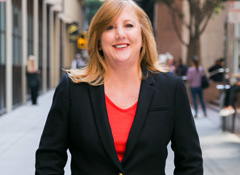Grayling on why brands must ‘communicate their tech exploration’
Future tech challenges mean that brands must plan to communicate their digital aspirations more clearly, according to Grayling’s new paper: ‘Live Smart or Die’. Helen Ellis, head of technology at Grayling UK, speaks to Gorkana about the challenges PRs face and how comms teams can come out on top.
Grayling’s latest paper aims to use its insights in emerging technologies to articulate some of the challenges which organisations of all kinds will have to grapple with over the next decade. As well as adapting to these challenges, brands must learn to communicate the changes they are making, it says.
Ellis explains: “The roadside is littered with the corpses of companies that have not kept pace, or have failed to adequately communicate their evolution, and got lost along the way.”
Four developing challenges from the paper are:
- Age vs youth: The working patterns between generations are different – this creates a tension between a growing older population and Millennials, who desire a flexible way of working, but feel more burdened by the legacy of previous generations than ever before.
- Innovation vs regulation: Legislation and regulation struggle to keep pace with technological change and trends, such as the growth in connected devices and the Internet of Things.
- Speed vs structure: The interplay between the on-demand economy and the ageing infrastructure of major cities.
- Me vs AI: The tension between man and machine as more jobs become automated.
With these challenges in mind, the ability to communicate tech advances within a brand is crucial. For example, in the case of an ageing population, tech provides an opportunity for brands to come up with creative services as they have an audience with ‘plenty of leisure time and high disposable income’, according to the paper.
But, many brands, including train companies and banks, are getting rid of offline materials such as timetables and physical stores without considering how a range of users, particularly in the older demographic, can engage online when they don’t have the skills to do so.
For this reason, the paper identifies Blockbuster, Kodak and Myspace as ‘corpses of businesses that have failed to adapt their product, or their communications’.
Ellis tells Gorkana that communicating customer benefits with each technological change is the way forward.
She says: “This requires a delicate balancing act between an openness about the tech-led journey that a company might be on – incorporating AI or automation, for example – and revealing their hand to their competitors. Ultimately it is about communicating customer benefits.”
Large tech companies are the best at this, according to Ellis, but we see examples in lots of sectors.
“In logistics, for example, DHL is demonstrating its leadership credentials by talking about its trialling of drones and other technologies – while the reality is that most of its deliveries are still undertaken by road.
“Rail companies could definitely do a better job of communicating the benefits of technology like driverless trains; currently the Trade Unions are winning the argument on safety grounds.”
But, it’s still early days, this is a forward looking report and, as Ellis states: ‘forewarned is forearmed’. She adds: “Understanding the implications of ‘Aging vs Youth’, for example, will help with the planning of future channel strategies and messaging.
“We encourage brands to understand these audiences better when thinking about their communications, old versus young is one consideration but so too is state of mind within subsets of these groups – one sized campaigns really don’t fit all audiences anymore.”
- ‘Live Smart or Die’ is part of the Grayling Advantage Series, a program that addresses some of the major reputational, regulatory and communications challenges facing organisations today.







